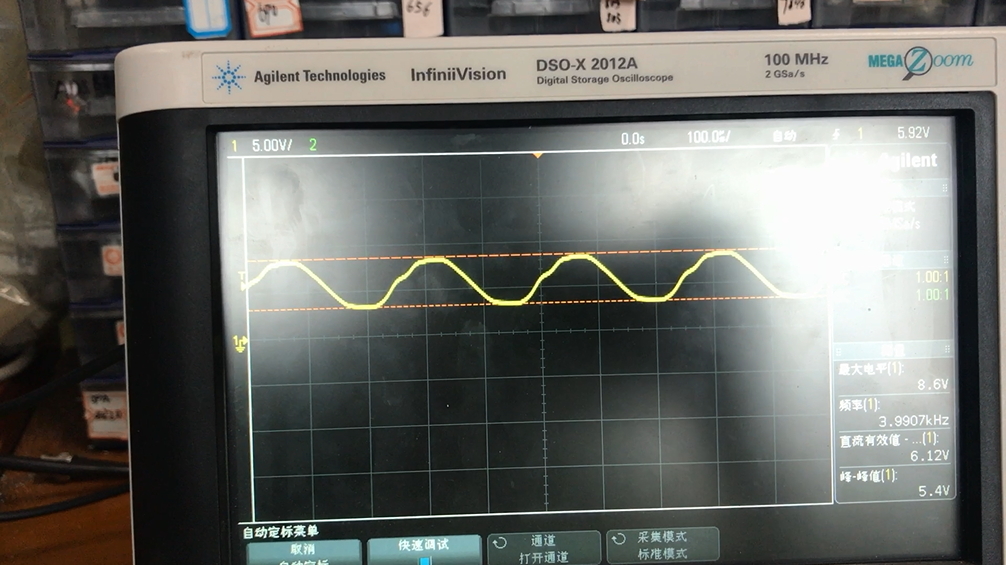Other Parts Discussed in Thread: TPA3116D2,
hello!
Recently, I used the LMG5200 chip to build a Class D amplifier, but when I chose a different PWM input chip, I had different effects.
Solution 1: Use TPA3116D2 chip as PWM modulator
This kind of scheme can better realize the function of the class D power amplifier, which is the waveform of the output of the class D power amplifier (the load is 4 ohms).
However, we consider that the TPA3116D2 chip itself is a Class D power amplifier. It is not very suitable to use this chip as a PWM modulator.So we changed a PWM chip.
solution 2: Use LTC6992 as PWM modulator
This chip can realize PWM modulation. In the experiment, we also confirmed that this chip can realize PWM modulation. However, if this chip is used as a PWM modulator, the output signal of the class D power amplifier will be deteriorated, and the power of the power amplifier cannot meet the requirements.
The following is the waveform diagram after we put the LTC6992 chip into the circuit.
Option One: We use 1KHZ sinusoidal signal to increase the signal amplitude test output signal
When inputting a 100mv signal, the resulting waveform is:
The above are the LTC6992 output waveform diagram, LMG5200 input waveform diagram, LMG5200 output waveform diagram, and filtered output waveform diagram.
After testing, in the case of 1Khz, the power of Class D amplifier can reach 20W (4 ohms).
Option Two: We use 4KHZ sinusoidal signal to increase the signal amplitude test output signal
After testing, when the input signal exceeds 150MV, the output signal changes and the power requirement cannot be reached.When the input signal is less than 150MV, each part of the waveform is similar to the 1KHZ picture.When the input signal is 1KHZ, the output waveform is distorted after the amplitude of the input signal reaches 350Mv.
When the input signal exceeds 150MV, the waveform is as follows:
We can clearly see the waveform distortion, but when I choose the TPA3116D2 chip, the frequency does not appear when the frequency reaches 4KHZ. When the LTC6992 chip is selected, the power will decrease as the frequency increases, and only a small signal can be input to obtain a better output waveform.
Conclusion:
We don't know why there are such big differences between the two PWM modulators. What are the requirements for the PWM input of the LMG5200? How to solve this problem. If you see, trouble reply me. Thank you。


